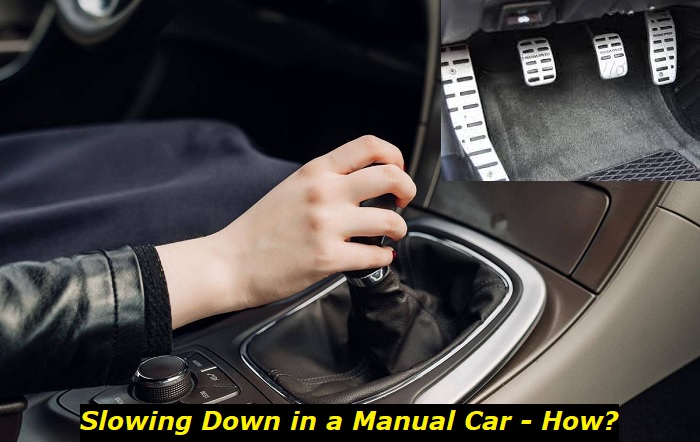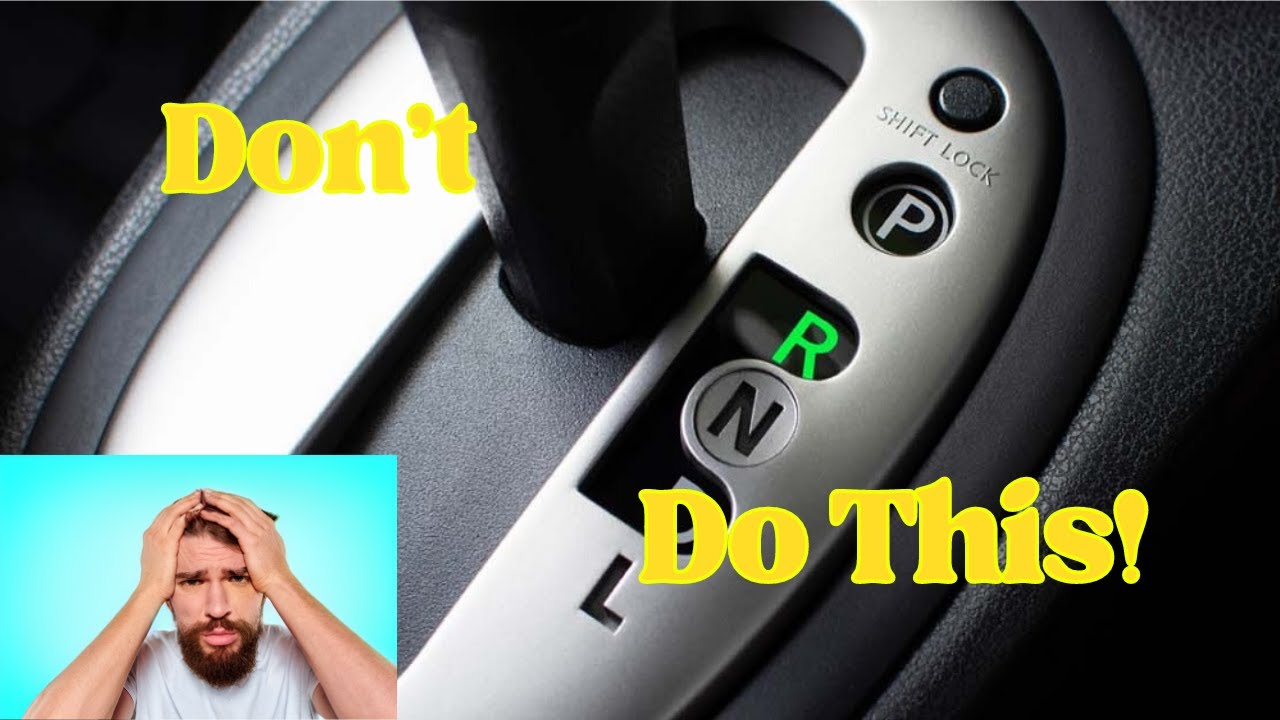Driving a car with a manual transmission is seen as more fun by many people, especially purist automotive fans. This is because this gives drivers more control over their auto, particularly in the way that it delivers power during accelerations. By far, it's the best way to dictate the power management of your vehicle.
With the immense preference for automatics over it, manual transmission drivers are now just a few. According to reports, around 96 percent of US drivers drive automatics, making the other a dying breed.
With that, this skill of driving a manual transmission is becoming extinct and a lot of misconceptions over it have risen due to lack of practice or knowledge over it. In this article, we will tackle one of the most common discussions over the subject, and that is how to slow down correctly in a manual car.

What You'll Learn Here
This article revolves around the topic of the proper way of slowing your car with a manual transmission. It includes the following sections to provide you with more familiarity on the matter:
- What Most Manual Drivers Do
- What Other Manual Drivers Recommend as the Best Course of Action
- What to Avoid When Slowing Down in a Manual Transmission Car
- Benefits of Driving Manual Transmission Cars
What Most Manual Drivers Do
A popular technique that manual drivers do when slowing or stopping their cars involves the following steps:
- Slowly lift your foot from the gas pedal to ease up on your acceleration.
- While doing so, gradually press the brake.
- Smoothly press on the clutch and shift your gear into Neutral as you continue to lower the brakes.
This is commonly a good way to slow down or go to a stop in a manual transmission car, but this may not serve as the right course of action in several instances. It may be okay to apply this method if you are cruising at low speeds. However, you have to be prepared to enter into gear if you suddenly find yourself facing an obstacle along the way and you need to accelerate your vehicle.
In this case, others recommend downshifting as a more effective and efficient way to slow or stop your manual transmission car.
What Other Manual Drivers Recommend as the Best Course of Action
Downshifting a manual transmission car is the process of shifting into lower gears as you slow down or come to a stop. This can be done either on its own or in combination with pressing the brake at the right times.
The process to do this comprises the following steps:
- Ease up on the gas pedal and lightly tap the brake to help your vehicle slow down.
- Begin by pressing the clutch pedal completely to disengage the engine from the transmission as your vehicle slows.
- Move the gear shift lever into a lower gear (for example, if you're currently in 4th gear, move to 3rd).
- Once the lever is in position, slowly release the clutch pedal until it engages with the lower gear. This will cause a slight jolt in acceleration and you may need to press on the brakes to slow the car down if it happens.
- Continue doing this until you've reached the desired speed.
- When it's time to come to a complete stop, press the clutch pedal again and move the gear shift lever into 1st gear, and then depress the brakes while slowly releasing the clutch.
- Once your car is at a complete stop, you can release the clutch pedal fully.
Downshifting in a manual transmission car takes practice but will eventually become second nature for any driver. It is an important skill that helps with fuel efficiency and overall control of the vehicle.
Take note that downshifting at the wrong time may cause your car to overrev. Such an instance exposes your vehicle to potential engine and transmission damage. The first to take a hit here are the valves, rods, pistons, cylinders, flywheel, and clutch, among others. So, take some time to learn how it properly works.
What to Avoid When Slowing Down in a Manual Transmission Car
If slowing your car for some reason, avoid riding the clutch. Doing so can cause the clutch to quickly wear out and/or overheat, as well as damage your car.
It's also important to avoid shifting too quickly or jerking the lever into lower gears. The sudden movement can put too much strain on the transmission and other components of your car, leading to premature wear and tear.
Be sure to move the gearshift lever smoothly and calmly when downshifting to prevent any issues.
Benefits of Driving Manual Transmission Cars
Manual transmissions can be very challenging for people who are so used to driving automatic transmissions. However, they offer specific advantages over automatic transmissions that can be beneficial to drivers who know its basics. From better fuel economy and increased control to more reliable performance and fun driving experience, it's easy to see why manual transmissions remain a popular choice for certain car owners today.
Manual transmission, in the right hands, has many advantages over automatic transmission that can be beneficial to drivers. These include the following:
1. More Control
Manual transmissions give drivers more control and precision in their driving. For example, the driver can manually select what gear they want to be in at any given time and adjust their speed as necessary for different terrain or conditions. This allows them to have a better sense of what is happening with the vehicle under different circumstances.
2. Better Fuel Economy
Manual transmissions usually provide better fuel economy than automatics due to the lower number of gears available and less power lost during shifting. The fewer gears also mean there are lesser parts inside the transmission which leads to slower wear-and-tear on it over time.
3. Easier Maintenance
Manual transmissions require less frequent maintenance than automatic transmissions since they have fewer moving parts. This makes them easier to maintain and can also save money in the long run. Additionally, manual transmissions are usually cheaper to repair if something does need to be fixed.
4. Better Reliability
Because of their simpler design, manual transmissions tend to be more reliable than automatics and are less prone to common problems such as transmission slippage or slipping out of gear. This can make them a better choice for those who drive in harsher conditions where reliability is key.
5. Easier Driving on Hills
Manual transmissions provide an advantage over automatics when driving on hills due to the ability to select different gears while going up or down. This allows the driver to maintain a more consistent speed and can prevent the vehicle from being overworked due to it having to constantly shift gears to go up or down a hill.
6. Easy Parking
Manual transmissions are easy to use when parking since they don't require as much finesse with controlling the brake and accelerator. This makes it easier for drivers who may not have as much experience driving stick-shift vehicles, allowing them to park in tighter spaces with ease.
7. Cheaper Upfront Cost
At least initially, manual transmission cars tend to be cheaper than their automatic counterparts since there is less technology involved in manufacturing them. This makes them a more cost-effective choice for those on a tight budget.
8. Caters to Specific Market
Manual transmissions have a good resale value over certain types of drivers. These are very popular for those who prefer to have a more active hand in managing the power directed to the wheels of their vehicles.
9. More Fun to Drive
Due to the increased level of control that manual transmissions provide, they can be more fun and engaging to drive than automatics since the driver is able to feel more connected with the vehicle while driving. This can make them an ideal choice for those who enjoy spirited drives or performance driving.
10. Easier Diagnosis
Since manual transmissions have less complicated parts compared to automatics, it can make diagnosis and repair of any issues easier since the mechanic only has to deal with a few components. This can save time and money in the long run for both the driver and the mechanic.
Conclusion
Manual car drivers in the US are no longer as common as before, unlike the other parts of the world which still have a significant number of these types of drivers. In a person with a basic understanding and practice in terms of driving manual transmission though, the system holds many advantages for them. Primarily, it lets them have complete control over the performance of their cars.
So, if you're considering driving a manual transmission, you should learn and practice its basics first. One of the most crucial lessons that you should pay close attention to is how to correctly slow down your vehicle.
As discussed here, there are two ways to do this. One is by slowing down and getting into Neutral until the car reaches your desired speed or until it comes to a halt. Another, what many say to be the most effective and efficient, is through the aid of downshifting. Depending on the situation you're in, as well as your driving preferences, both serve as good choices for you.
About the authors
The CarAraC research team is composed of seasoned auto mechanics and automotive industry professionals, including individuals with advanced degrees and certifications in their field. Our team members boast prestigious credentials, reflecting their extensive knowledge and skills. These qualifications include: IMI: Institute of the Motor Industry, ASE-Certified Master Automobile Technicians; Coventry University, Graduate of MA in Automotive Journalism; Politecnico di Torino, Italy, MS Automotive Engineering; Ss. Cyril and Methodius University in Skopje, Mechanical University in Skopje; TOC Automotive College; DHA Suffa University, Department of Mechanical Engineering






Add comment